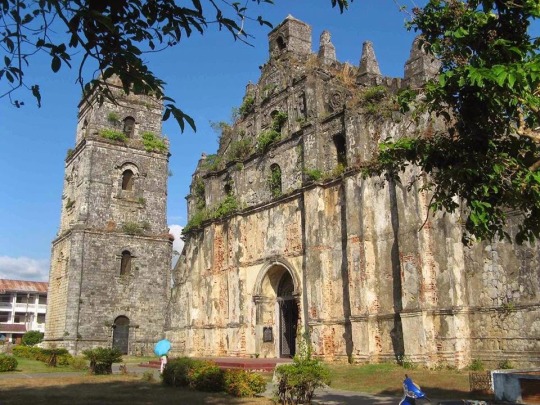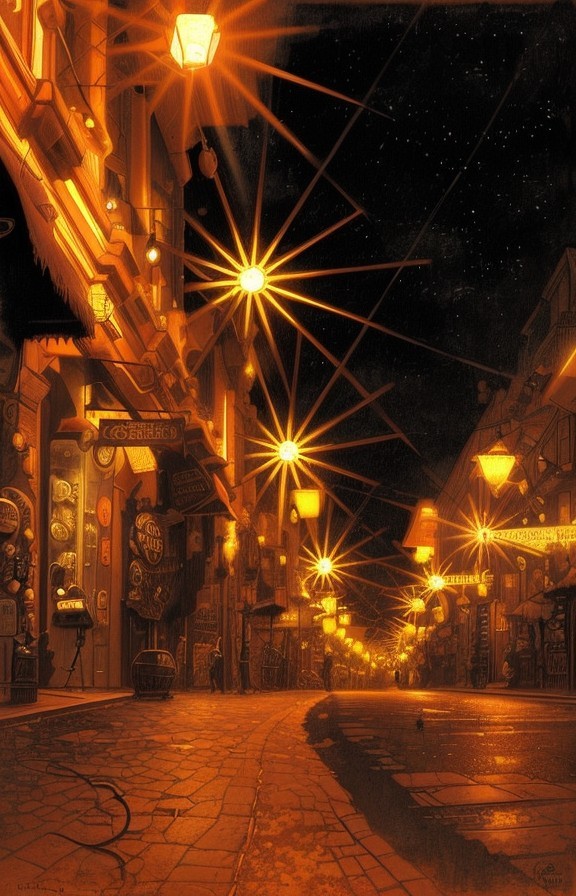#Ilocos
Text


Paoay Church, Ilocos Norte, Luzon
I’ve never seen a Catholic or any other Christian church in the Philippines with these buttresses. This church was established in 1686 and completed in 1710.
57 notes
·
View notes
Text

Annabelle Rodriguez nee Gandeza
Born September 15 1969 in Barrientos, Luna, Philippines
Baldwin Park, California
#Annabelle Rodriguez#Annabelle Gandeza#Barrientos#Luna#La Union#Pilar#Santa Cruz#Ilocos#IIocos Sur#Philippines#Baldwin Park#Covina#LA#California#UCLA#facility management#wife#mother#beloved aunt and sister#beloved cousin#may she rest in peace#<3
13 notes
·
View notes
Note
Do you know anything about pre-colonial ilokano culture? Like any practices, myths etc :)
Precolonial Ilokano culture has also been on my radar especially since I myself am of Ilokano descent actually! My ties to the culture had been severed by my Ilokano grandfather after a falling out with his family, but I might be able to get together some sources and articles on precolonial Ilocos some other time.
One of the most popular myths from the Ilokos region that is often taught in schools even outside the area is the Life of Lam-Ang or Biag ni Lam-Ang. This story follows Lam-Ang and different parts of his life from before his birth and up to his peaceful life after all of his adventures. You can read it here alongside a collection of other epics from other Filipino ethnic groups and an English translation here (thanks to a Christian school's English class lol)
From quick research, an article by Jordan Clark of the Aswang Project lists the 1978 book Handbook of Philippine Language Groups as source for knowing the early Ilokano pantheon or at least the generally accepted Ilokano pantheon.
This book identifies Buni as the supreme being of the pantheon, who, from other sources I've seen, is often referenced as someone who has tasked the giants with creation. I can't seem to find the specific myth that exactly references how the world had come to be. Parsua was also identified as a creation deity.
Then there are the deities related to different nature-related and weather-related things which are listed as Apo Langit (Lord Heaven), Apo Angin (Lord Wind), Apo Init (Lord Sun), and Apo Tudo (Lord Rain).
There are also variations listed within the article that had been referenced to have come from the book published in 1952 called the Historical and Cultural Data of Provinces specifically from Vigan, Ilocos Sur, although it seems to have more outsider influence.
Here's the plain-text from the article since it's pretty difficult to find other sources of this myth other than the book and the article:
Cabalangegan was formerly a jungle at the edge of the river Abra. On the far side of the river were mountains high and steep. On these mountains lived an old man named Abra, the father of Caburayan. The old man lived and controlled the weather. It is said that the river Abra was a gathering of water vapor, shaded, and the days were always bright with sunlight.
At that time Anianihan, God of Harvests, was in love with Anianihan, Goddess of Healing. Her mother, Lady Makiling knew about their mutual understanding, but Abra did not know it for the three were afraid to tell him since he might punish them as he disapproved of Anianihan. Abra wanted his daughter to marry either Saguday, God of the Wind, or Revenador, God of Thunder and Lightning. This being so, Anianihan took Caburayan from her home. Abra wept a great deal. He sent Lady Makiling away after beating her.
When Abra was alone, he wept day and night till Bulan, God of Peace and Calm, came. But though Bulan was there to brighten Abra’s spirits, Abra did not stop weeping. He could not express his anger. He begged the other gods to bring back his daughter.
One day the sun, eye of Amman, shone so bright that the water of the river Abra was excessively heated. Smoke rose from the river. Soon, thick, black clouds began to darken the sky. Then Saguday sent the strongest wind until the crowns of the trees brushed the ground. The god Revenador sent down the largest strings of fire. The heaviest of rains fell. All these frightful events lasted seven days. The river Abra then rose and covered the trees. There rose a vast body of water and the highest part of the mountain could be seen. It looked like the back of a turtle from a distance. At this spot Abra lived.
On the seventh day, Abra heard a cry. He also heard a most sorrowful song. Abra dried his tears and looked around, but he saw no one. He determined to find Maria Makiling, his grandchild. He did not find her for the cries of the baby had stopped.
The search for the baby lasted three full moons, but to no avail and the poor old man returned to his home very sad. He lost all hope. His wits were gone. At that time Maria Makiling was under the care of the fierce dog Lobo, that was under a god of the Underworld. He had been punished by the other gods and that is why he looked like a fierce dog. He was sent down to do charity.
From just the story alone, there's some obvious influences from other cultures such as one of the deities mentioned, Lady Makiling, the mother of Caburayan, having come from Laguna, as well as the usage of the word Lobo to name a fierce dog with the word having come from Spanish.
This may be the reason why this myth isn't regarded as highly as a more authentic version of the precolonial Ilocano pantheon although it is an interesting story still.
I do want to learn more about Ilocano precolonial culture too but that's all I have for now! Hopefully it's informative enough especially since finding sources outside the Aswang Project website is rather difficult.
#mayaqna#mayapino#runin-reads#ilocos#ilocano culture#ilocano mythology#philippines#filipino culture#filipino mythology#precolonial philippines#long post
29 notes
·
View notes
Text

Calle Crisologo is a historic street in Vigan, Ilocos Sur, famous for its cobblestone pavement and old Spanish houses. It is part of the Vigan Heritage Village, a UNESCO World Heritage Site that showcases the blend of Filipino and European architecture. Calle Crisologo can be explored either on foot or through a horse-drawn carriage ride. You can admire the antique furniture, lamps, and decorations of the houses, some of which have been converted into museums, restaurants, shops and hotels.
#Calle Crisologo#Vigan#Ilocos#Philippines#Asia#Night Photography#AI Art#AI Image#AI Photography#Artificial Intelligence#Ilocos Sur
8 notes
·
View notes
Text
Ang tagal ng uwian excited na ako sa byahe namin mamaya pa ilocos 😊
10 notes
·
View notes
Text

A fairly harmless, headless being. The pugot does not seek to cause injury, only to frighten people.
#BriefBestiary#bestiary#digital art#fantasy#folklore#legend#myth#mythology#pugot#monster#headless monster#luzon#ilocos#ilocos region#filipino folklore#filipino legend#shapeshifter#paring pugot#ghost
9 notes
·
View notes
Text









never had the chance to post this because i keep on forgetting hahaha
when we went to Baluarte Ilocos 💓 ang sarap dun kasi legit pwede mo sila makasalamuha

4 notes
·
View notes
Text

Bagnet and Vigan longganisa

Bagnet sisig

Bagnet empanada

Okoy

Mango blast

Avocado & mango ice cream

Red horse stallion!!!

Poqui-poqui
#ilocos#delicacies#pork#bagnet#ice cream#mango#cocktails#beer#red horse#yum#travels#sisig#empamada#bread#okoy
2 notes
·
View notes
Text

Cabeza de Turco (kabesa, babilonia, sabong ti monmon, and monmonsingit)
Kabesa flower. Slimy, comparable to saluyot in texture.
Type: Vegetable
Preparation: As paksiw, dinengdeng, atsara, or added to munggo, and sinigang.
Region: Ilocos sur, La Union, and Pangasinan
#cabeza de turco#ilocos#la union#pangasinan#kabesa#gulay#philippine produce#heritage ingredient#savory
1 note
·
View note
Text





Bronze sculpture of Lam-ang fighting a crocodile from the Ilocano epic poem, "Biag ni Lam-ang." (Sculpure by Paul Quiano)
Burgos, Ilocos Norte, Philippines 🇵🇭
0 notes
Text




May 09, 2024 || Ilocos bound
Nag side trip sa elyu before umuwi ng Vigan. ❤️
3 notes
·
View notes
Text

Bangui Windmill is not only a source of clean and green energy, but also a tourist attraction and a symbol of pride and progress for the people of Ilocos Norte. The wind farm generates about 40% of the electricity needs of the province and reduces greenhouse gas emissions by about 56,000 tons per year.
#Bangui Windmill#Bangui#Windmill#Ilocos#Ilocos Norte#philippines#Asia#AI Art#ai photo#ai image#artificial intelligence
3 notes
·
View notes
Text




kapurpurawan rock formation
0 notes
Text




an argument for cutting my hair short
0 notes





